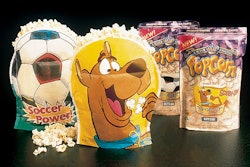
PW: What supermarket trends affect packaging?
Lempert: One of the biggest changes in “supermarketing” has been the shift away from the center of the store to perimeter departments like fresh bakery, deli, and prepared foods. This has created a new challenge for brand marketers to develop packaging that still retains its branding—and explanatory messages—along with the “fresh-made-in-the-store” concept.
PW: What packaging trends affect merchandising?
Lempert: As more products are moving into flexible packaging, supermarkets need to develop proper displays. Many times a wire rack or fixture to hold these packages upright just doesn’t serve the brand properly as the packages become crinkled or worse, and it’s not very appetizing.
PW: What supermarket section has been most changed by packaging innovation since 2000?
Lempert: Produce, no question about it. Not only did prepackaged lettuce create a new category of “branded” produce items, but it also led to the biggest increase in category sales and profits in the past ten years.
PW: What’s the biggest complaint you hear from consumers about packaging?
Lempert: Packages that are hard to open. With the aging Baby Boomer population—and a predicted rate of 55% having arthritis—brands need to focus on wide fixtures that allow consumers to open packages without causing them pain.
PW: What’s your own biggest pet peeve with packaging today?
Lempert: Packaging that’s been developed to win awards instead of selling the product. The package, especially for food, is the best salesman for a brand. Use it to tell the story, make mouths water, and satisfy that consumer desire, whatever the brand stands for, such as to be healthier or to be that great gourmet cook. —RL






















